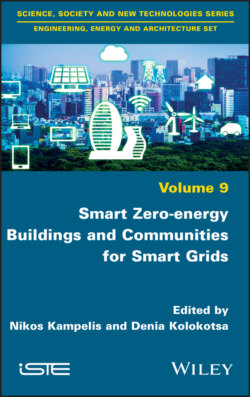Читать книгу Smart Zero-energy Buildings and Communities for Smart Grids - Группа авторов - Страница 16
1.1.3. Distributed systems
ОглавлениеDistributed systems play a crucial part in the demand response of smart buildings, as they provide the necessary technical infrastructure (Chalkiadakis et al. 2011). Moreover, distributed systems support the effective exploitation of energy storage. Since smart grids may integrate renewable energy sources, energy storage is often seen as necessary for the electric utility systems with large amounts of solar or wind power generation to compensate for the inability to schedule these facilities to match power demand.
Load shifting through effective thermal energy storage or electricity storage is a major part of smart grids and already exploited by various studies for generation– consumption matching and zero energy targeting (Chalkiadakis et al. 2011; ANSI/SHRAE standard 135-2010 2013). Therefore, as the major power consumers on the demand side, buildings can actually perform as distributed thermal storages to help relieve the power imbalance of a grid. This requires an accurate prediction of possible power demand variations of buildings and energy information from the grid side for interaction and optimization (Xue et al. 2014) based on measurements acquired from smart metering. Finally, smart grids can play a significant role in the building sector due to the fact that they create a physical proximity between consumers and energy production that may help increase end users’ awareness towards a more rational use of energy for buildings. Studies show that the users’ awareness combined with smart grids can decrease the energy costs by 15% (Li and Hong 2014).
